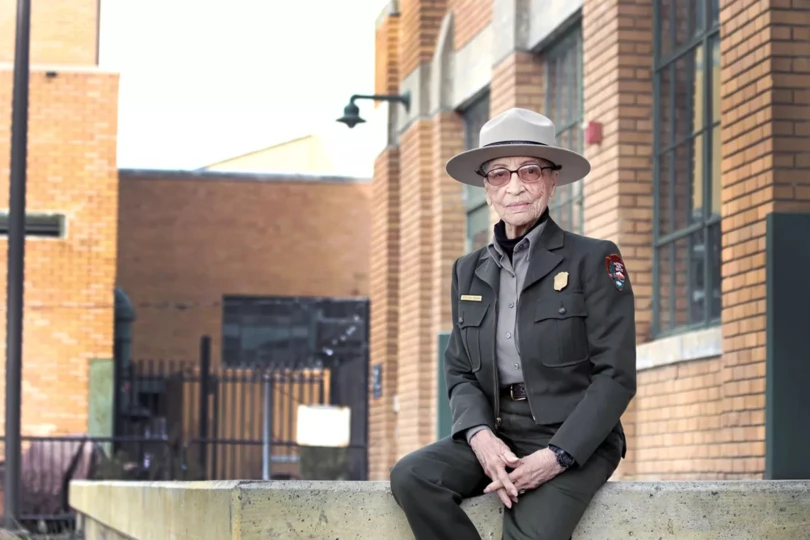Guess what? Anyone can start birding with simple (and cheap) equipment, or even with things you already have around the house. Here’s how.
Birds are everywhere! They’re in your backyard, on your street, and in your local park. And birdwatching offers an eye-opening — and above all, accessible — way to connect with nature every day.
A new social media campaign, #BlackBirdersWeek, encouraged everyone to go outdoors for adventure, enjoyment, and learning. Birding is an easy way to get connected to nature!
“But don’t you need fancy — cough, expensive — equipment that costs a lot of money?” you ask.
Not at all. Here’s a quick guide to help you get outside to look for birds and learn more about the world around you. From the absolute newbie to the diehard, we’ve got you covered with this equipment guide.
Birding for Beginners
Want the good news? You don’t need to spend any money! Chances are you have a smartphone and a notebook, and that’s really all you need to get started.
The first step is to go outside. Take a walk around and find a spot to settle down for a few minutes. Being quiet will definitely help. When you first start seeking birds, you’ll probably only really notice them once they start moving. That’s OK, just look and see if you can notice any important features of the birds, like size, shape, color, or sounds.
You can even use some free apps to try to help you identify birds. You probably won’t be perfect at figuring out what type it is, but you can keep a list of what you think you saw in your notebook.
Beginner Bird-Watching Gear
- Smartphone
- Free apps
- Notebook
- Pen
Questions You Can Ask
- How many birds can I see?
- Are there different species?
- Can I hear different calls?
Birding Gear for Amateurs
Want to up your game? You might have an old camera sitting around or want to spend a little money on some equipment. Let’s look at a budget under $50.
Now that you’re a little more comfortable looking for birds, you might want to take a closer look at ‘em. First, check your attic or closet for any old cameras. Do you have a point-and-shoot from 2010 that still works? Use it!
Small cameras or simple binoculars will help you get a better look at what birds look like so you can more accurately identify them. Plus, Walmart and big sporting goods stores offer some binoculars you can purchase for pretty cheap.
If you’re also interested in improving your IDs, grab a field guide from a local bookstore.
Amateur Gear
- Old point-and-shoot camera
- Binoculars
- Field guides
Questions You Can Ask
- Can I start identifying birds without a guide?
- What are the common species around me?
- Do I see different birds in different places?
Birding for the Aspiring Professional
Now that you’re getting more familiar, it’s time to step up the apps and equipment. Here’s a checklist with supplies around $100.
There’s a free app that can help you keep track of what species you see, where you saw them, and when. By doing this, you’re doing “community science” and may even aid scientists with their research. Complete your Merlin Bird ID first, then tally up the species you see during your expedition.
If you’re looking to get better binoculars, here are some options that won’t break the bank but are a little better quality. Pro tip: The higher the numbers in the binocular name, the better they are at magnifying things (i.e., 8×42 is better than 8×32).
Another option is to invest in a new point-and-shoot camera so you can take pictures and check your IDs once you get back home.
Semi-Pro Birding Gear
- eBird app + course
- eBird by Cornell Lab (free) — iOS / Android
- How to use eBird Course (free)
- Upgraded binoculars
- Bushnell Waterproof Spectator Sport Binocular 8×32: $67
- Bushnell Prime 8×32: $104-140
- Bushnell Prime 8×42: $104-140
- Point-and-shoot camera
- Sony W800 with 5X optical zoom: $100
- Canon ELPH 180 with 8X optical zoom: $109-119
Questions You Can Ask
- How do the bird species change over time?
- Are there more birds at different times of the day?
Elite: Leveling Up
If you’ve absolutely fallen in love with birding walks and want to upgrade to much fancier equipment, this list is for you. You most definitely don’t need any of this equipment to be a birder, but it can make it even more fun.
First up, grab the portable version of a field guide called the Sibley app. You can plug in characteristics to make an ID or browse through the birds of North America and learn more. In terms of equipment, you can also get better binoculars, so you can get those distant birds in focus.
Pro tip: Check out a “digiscope” as a way to connect your phone to your binoculars. You might be able to take some cool photos that way.
A final major way to bring your pictures to the next level is to invest in a DSLR camera, with or without a telephoto lens (Canon and Nikon are the most common). Another pro tip: Check those websites for refurbished cameras. They’re cheaper but still up to par.
Professional Gear
- Paid app
- Sibley: $20
- Binoculars
- Vortex Diamondback 10×42: $225
- Vortex Diamondback 10×50: $249
- Digiscope
- DSLR Camera
- Canon Rebel: $399
Let’s go!
Whether you’re just getting started or looking to upgrade your equipment, birding is for everyone. Take some time every week to enjoy the outdoors and connect with nature — birds are a great way to get started. See you out there!










